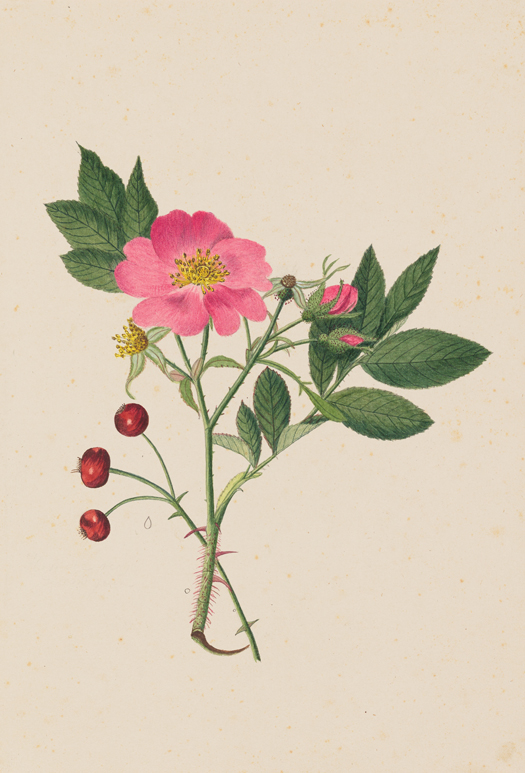From our February 2017 issue

Furbish found this specimen in 1876 in Brunswick, where a nature preserve now bears her name.
Imagine you’re a botany student at a university in Maine around the turn of the 20th century. It’s February, and you’d like a look at a bullhead pond lily, Nuphar variegata, fairly common around Maine’s wetlands. But the ponds are all iced over, the lilies are dead or dormant, and since you’ve opted to study botany in the frozen wasteland of northern New England, this situation may well persist until June.
What’s a Gilded Age shrub scholar to do? Can’t fall back on a Google Image search. And some brittle, pressed specimen just isn’t the same.
The scenario gives you an idea of how valuable were the 1,326 detailed renderings that Maine botanical illustrator Kate Furbish donated to Bowdoin College in 1908. You think you’re longing to see some greenery in the dead of winter? As Richard Lindemann, director emeritus of Bowdoin’s library archives, points out in his foreword to the new two-volume set Plants and Flowers of Maine: Kate Furbish’s Watercolors, “At a college where winters are long and spring is often reluctant, such a collection . . . would have been particularly valued for providing the opportunity to examine renderings of plants in stages that would otherwise be impossible to observe during the academic calendar.”
Plus, they are super pretty to look at.
Furbish grew up in Brunwsick and took an early shine to vegetation. The daughter of a successful merchant, she was educated in a private school, received drawing lessons from childhood, and started collecting and pressing plants near Brunswick in her 20s. Then, around 1870, when Furbish was in her mid-30s, her hobby metastasized into a full-blown passion, and she launched a nearly 40-year project to seek out, catalog, and illustrate (with pencil and waterolor) all of Maine’s flora.





She launched the endeavor without any guarantee her work would find an audience. As a woman in the 19th century, the doors of the academy were closed to Furbish, although she carried on correspondence with some of the most accomplished botanists of her day, who considered her a peer. At a time when many women of her class found themselves largely confined to drawing rooms, Furbish hitched rides aboard the mail coach into the wilds of Aroostook County, bagged peaks in western Maine, and army-crawled through mires and bogs statewide. Her legwork yielded a collection admired today not only for its scientific precision, but for its sheer beauty.
“People say she’s like John James Audubon, and I wouldn’t object,” says Kat Stefko, director of Bowdoin’s library archives. “Same attention to detail, same incredible curiosity.”
Passion Project
Until now, if you wanted to admire Furbish’s work, you had to carefully thumb through 14 aged tomes in the Bowdoin library. These images are excerpted from two new, large-format volumes, titled Plants and Flowers of Maine: Kate Furbish’s Watercolors. At $350, the set is primarily geared towards research institutions and serious botany fanatics, although it’s a handsome means of weighing down a coffee table for anyone who admires Maine’s verdure. The collection is a labor of love on the part of Bowdoin, which recently digitized Furbish’s work, and Jed Lyons, CEO of publishing company Rowman & Littlefield (which bought Down East Books from this magazine’s publisher in 2013), a Bowdoin alum who has admired Furbish’s illustrations since college.

